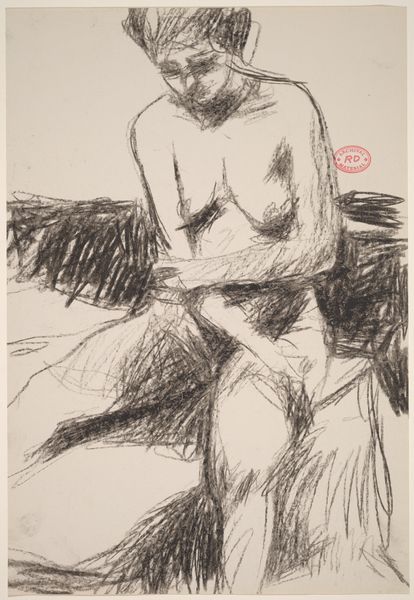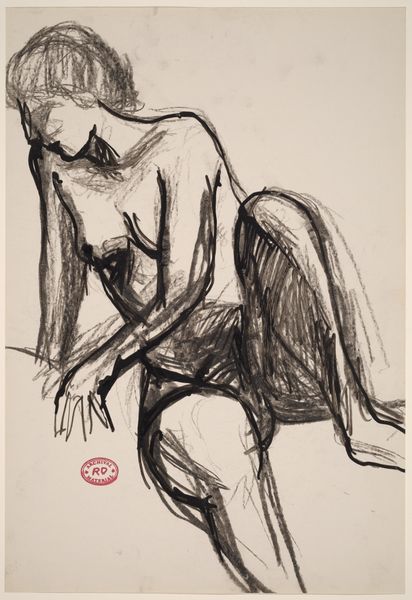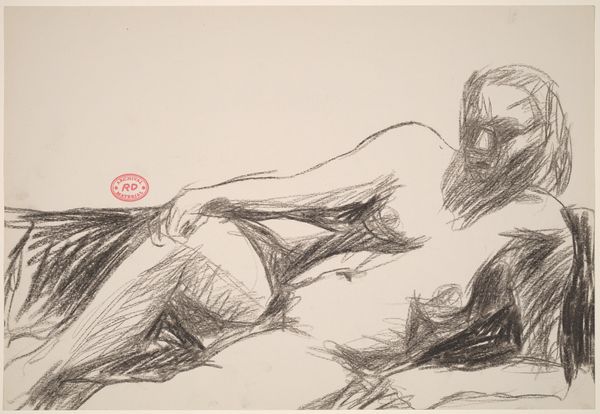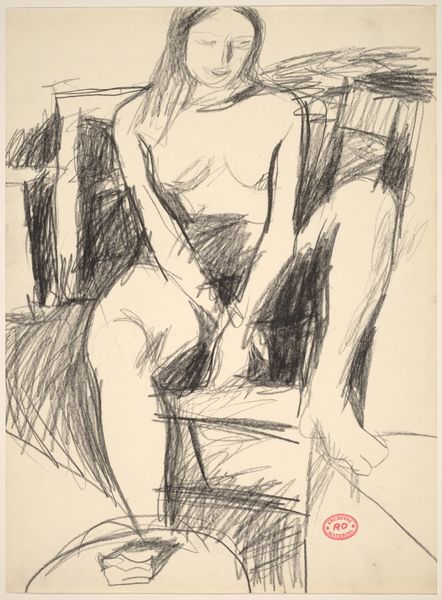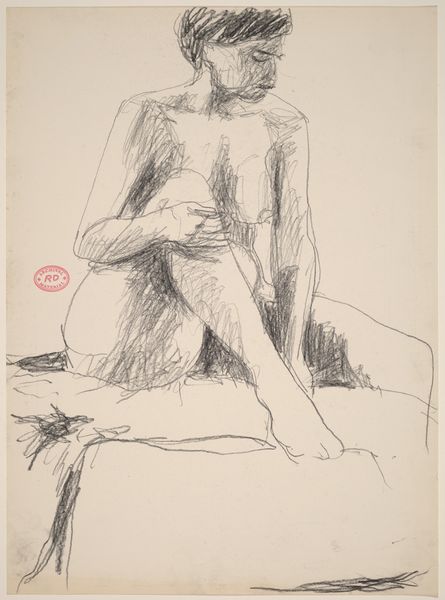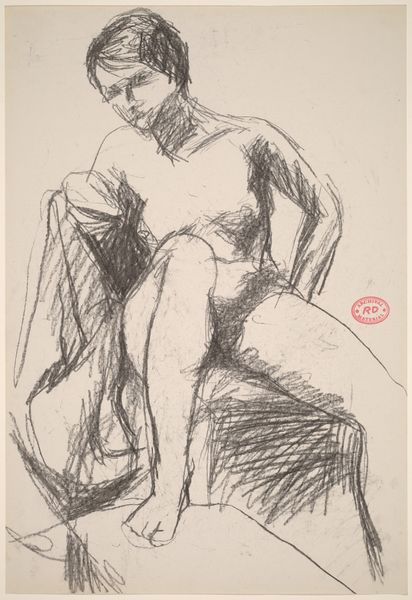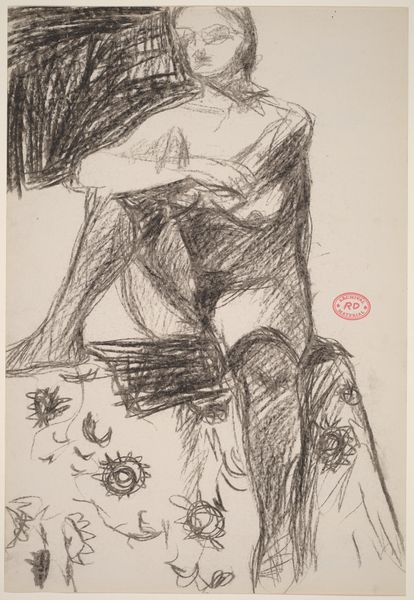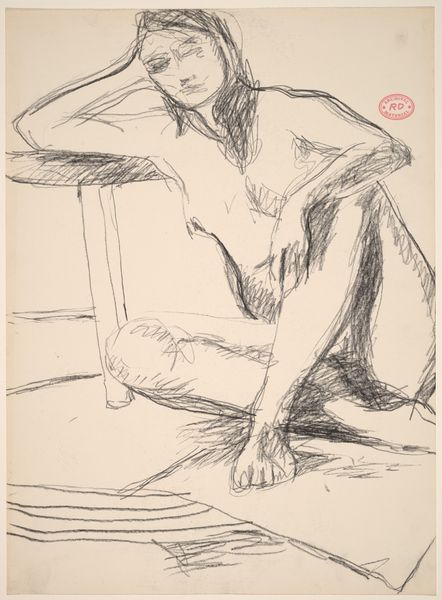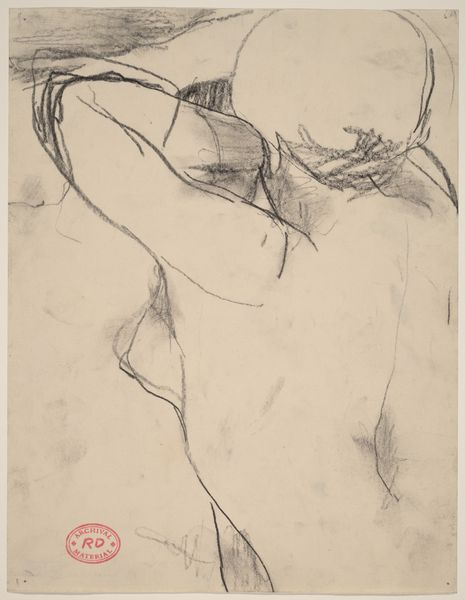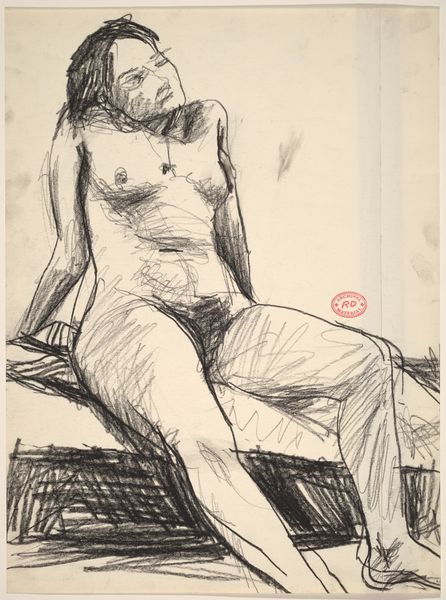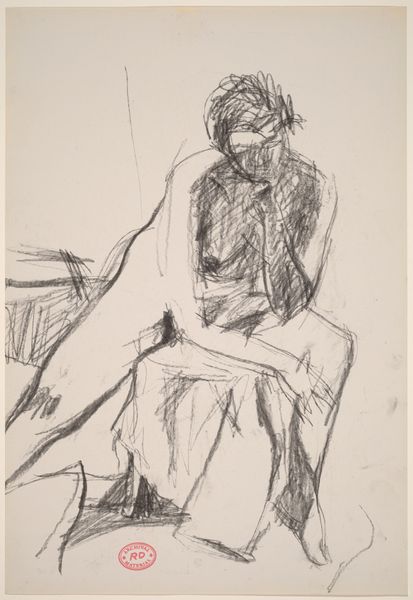![Untitled [seated female nude leaning against a support] by Richard Diebenkorn](/_next/image?url=https%3A%2F%2Fd2w8kbdekdi1gv.cloudfront.net%2FeyJidWNrZXQiOiAiYXJ0ZXJhLWltYWdlcy1idWNrZXQiLCAia2V5IjogImFydHdvcmtzL2EzNDhhNTdkLWE4ZTgtNDlkMC1hMGY4LTQxMmE3NThjMDdjYi9hMzQ4YTU3ZC1hOGU4LTQ5ZDAtYTBmOC00MTJhNzU4YzA3Y2JfZnVsbC5qcGciLCAiZWRpdHMiOiB7InJlc2l6ZSI6IHsid2lkdGgiOiAxOTIwLCAiaGVpZ2h0IjogMTkyMCwgImZpdCI6ICJpbnNpZGUifX19&w=3840&q=75)
Untitled [seated female nude leaning against a support] 1955 - 1967
0:00
0:00
drawing, charcoal
#
portrait
#
drawing
#
figuration
#
bay-area-figurative-movement
#
abstraction
#
sketchbook drawing
#
charcoal
#
nude
Dimensions: overall: 40.6 x 27.9 cm (16 x 11 in.)
Copyright: National Gallery of Art: CC0 1.0
Curator: Richard Diebenkorn created this striking charcoal drawing, “Untitled [seated female nude leaning against a support],” sometime between 1955 and 1967. Editor: There’s an undeniable rawness here. It looks like a quick study, full of hesitant yet confident strokes. A very palpable sense of observation, wouldn't you say? Almost vulnerable in its simplicity. Curator: The artist's method involves visibly layering and reworking the charcoal lines, displaying his decision-making, construction, and material processes very prominently. Diebenkorn really foregrounds his touch, showing the hand of the artist in its very becoming. The labor itself seems to take center stage. Editor: I think the sitter’s pose – leaning, perhaps exhausted – and the use of charcoal to create a sort of hazy texture lends itself to feelings of melancholy and intimacy. It's like catching a glimpse of a private moment, transformed into art through very basic materials. The blurring almost makes it feel as if the model is trying to sink back into nothingness. Curator: Right, charcoal as a medium is easily manipulated, erasable, and very inexpensive, which opens questions around accessibility, labor conditions for artists, and challenges hierarchies present in the art world where traditionally, oil on canvas was held as being the “superior” method. I mean, the drawing here seems very direct. It's art stripped bare of pretension, yet rich with the history of production. Editor: Exactly. Thinking of process, each line echoes not only what the artist sees but the act of seeing, questioning and recording. It leaves a kind of shadow of each moment's perception. It is about pure form and its transformation as time progresses. It really is a moment frozen within abstraction, the feeling of being human at rest and not quite there. It strikes at something. Curator: Seeing art with Diebenkorn, even something that seems this minimalist, calls us to think about our own complicity within the construction and assessment of art itself, where labor, method, and availability determine how we approach experiencing works of art. Editor: I love the intimacy and vulnerability that these gestural drawings manage to encapsulate. Definitely left me with a sense of quiet, human awareness.
Comments
No comments
Be the first to comment and join the conversation on the ultimate creative platform.

